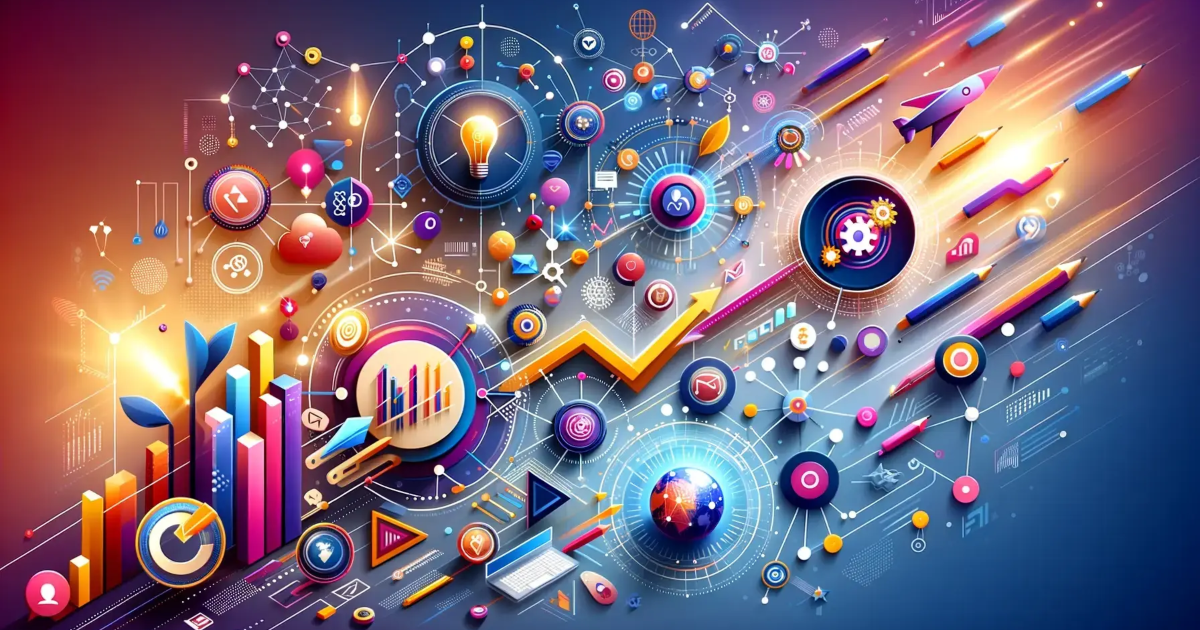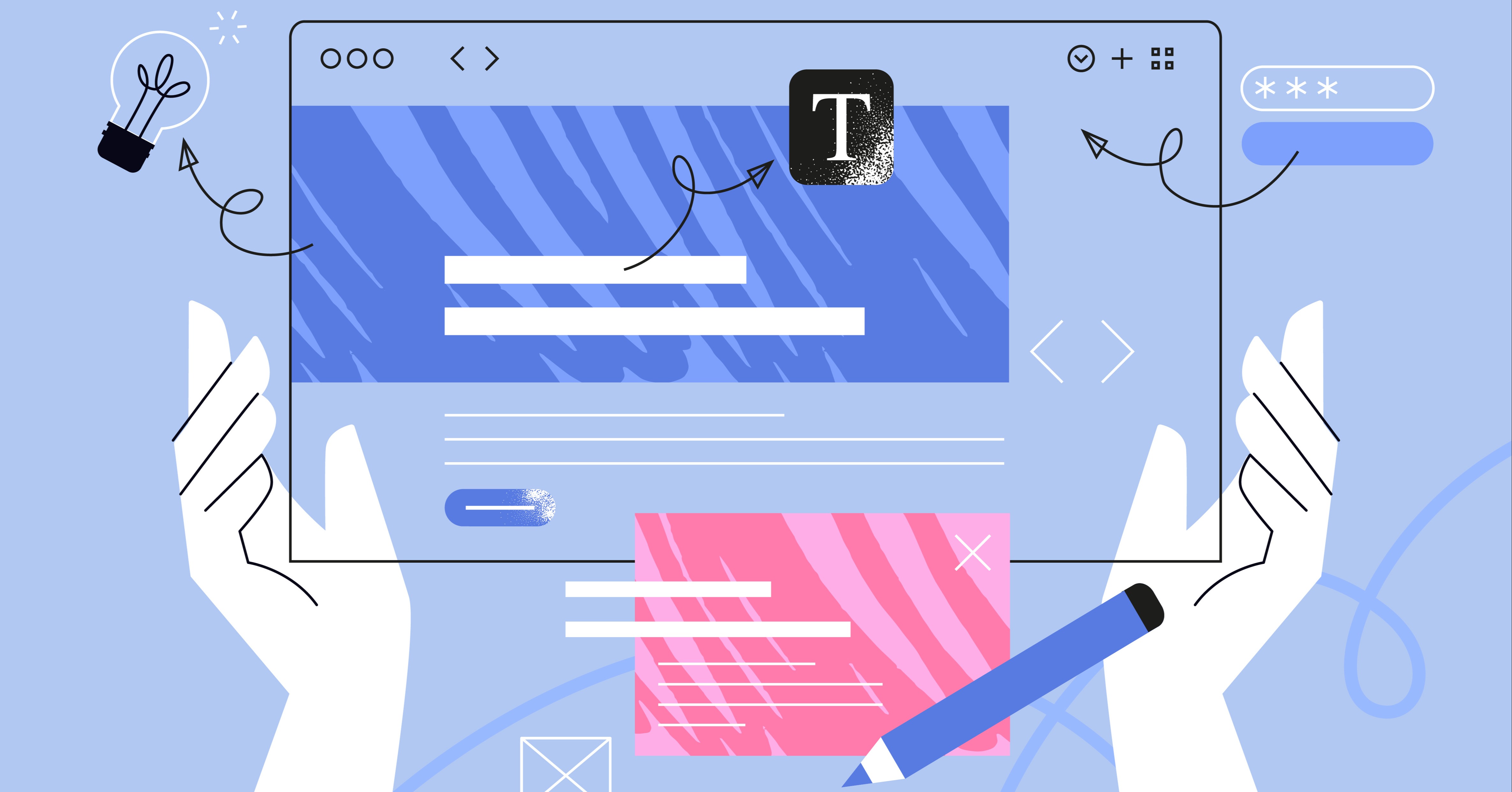
If you're feeling overwhelmed by all the digital marketing terminology and you're eager to grasp exactly what your digital marketing agency is up to, you've come to the right spot. Whether you're a seasoned entrepreneur or starting in the marketing world, partnering with the right agency can unlock a world of opportunities and propel your brand to new heights. However, maximising the benefits of this collaboration requires more than just signing a contract – it entails strategic planning, clear communication, and mutual understanding of goals and expectations. Here, you'll find everything you need to demystify, evaluate, and make informed decisions about digital marketing tools, strategies, and resources to help you extract the utmost value from your digital marketing agency, ensuring a fruitful and rewarding partnership.
Digital Ecosystem
Let's start from the beginning. Digital Marketing assets, also known as the "digital ecosystem," each serve a different function, with their roles determined by users. By understanding how your audience interacts with each one, you can determine what to expect from them. Generally, we use:
Website
This serves as the central hub of information for your brand. It provides in-depth and additional information about the Brand, connects your stakeholders, and opens communication channels for your customers. Make sure your website is designed with the user in mind, i.e., UX design (User Experience design). Familiarisze yourself with best practices to ensure that your page meets the basic principles of an effective website.
Landing Pages
They allow you to obtain the contact information of our target audiences or leads as MQLs (Marketing Qualified Leads) through the exchange of information that results in high interest to them, to subsequently initiate commercial actions. Often, landing pages serve as a Conversion Touchpoint in paid campaigns. So, the design of the landing page plays a crucial role in the effectiveness of lead conversion.
Blog
This is where your brand builds its personality. Its purpose is to engage your audience with articles aligned with their main interests, demonstrating your industry authority, experience, and point of view. It is also vital for building domain authority and ranking in search engines through high-quality content using keywords that result in a high volume of searches among your customers and are related to your brand and content topics. This is known as SEO Content. Besides this huge benefit, you can also monetise your blog as a growth strategy through affiliate marketing.
Email Marketing
Utilises automation or scheduling tools to maintain consistent and relevant contact with our contacts, guiding them through their decision-making cycle by providing supplementary information and services.
SEO
Implements technological tools associated with our website to achieve an authority score that enables us to appear at the top of search results when searches related to our products and content occur.
Social Media
Establishes a robust brand presence across social networks to facilitate communication and offer additional points of interaction. Each social media platform has a unique relationship with audiences, utilised differently by various demographics, ages, and customer types. It's essential to study your audience before engaging on any platform. Let's explore the most popular ones:
-
- Facebook: is the most used social network by Australians in 2024, with a penetration rate of 73.6% (We Are Social Report) among the ages of 16 to 64 years old. This means it is the most robust and broad platform. Users report spending nearly 18 hours per month, and this trend continues to grow. It could almost be said that Facebook is a "must" for brands due to its massive penetration and high engagement. However, keep in mind that more users also mean a greater challenge in capturing attention. Review your social media video marketing strategy to encourage good results.
- Instagram: is a popular social network known for its visual-centric approach, allowing users to share photos and videos with their followers. In Australia, it ranks as the second most used social network, with users spending an average of 8 hours and 36 minutes per month on the platform. With its emphasis on visual storytelling and engagement, Instagram marketing provides individuals and businesses with a platform to showcase their creativity, connect with audiences, and explore a wide range of content from friends, influencers, and brands.
- LinkedIn: stands out as the preferred social network for B2B interactions and professional networking. It offers a platform for individuals and businesses to connect with professionals and market their products or services with highly specific and tailored segmentation. In Australia, it ranks among the top 5 preferred social networks, with a penetration rate of 26%. With its focus on professional relationships, networking opportunities, and industry-specific content, LinkedIn provides a valuable space for career development, business growth, and targeted marketing efforts.
- TikTok: has rapidly emerged as a powerhouse social network, capturing the attention of users worldwide with its short-form video content. In Australia, TikTok has seen remarkable growth, becoming the third preferred social network with over 41% penetration. Users spend an astonishing 29 hours and 36 minutes per month on the platform, showcasing its immense popularity and influence. With its creative and engaging content, TikTok offers individuals and brands a unique opportunity to connect with audiences, express creativity, and reach a diverse range of users.
- YouTube: Australian users spend an average of 17 hours per month on the platform, demonstrating its substantial influence on their daily routines. The migration from traditional on-demand TV to YouTube's paid subscription services is definitively altering the social network landscape and reshaping video consumption habits.
Content Creation
As you see, platforms are intrinsically connected with the content you use. In today's digital landscape, setting up a comprehensive social media video content strategy is paramount for businesses seeking to stay ahead of the curve. Video content offers unparalleled engagement and storytelling capabilities, allowing brands to connect with their audience on a deeper level and memorably convey messages. Whether it's through social media platforms like Facebook, Instagram, or TikTok, or professional networks such as LinkedIn, video content has the power to captivate and inspire. Moreover, contrary to popular belief, not all video marketing costs a fortune. With the right tools and strategies in place, businesses can create high-quality, effective video content that resonates with their audience without breaking the bank. By harnessing the potential of video content, businesses can drive brand awareness, increase engagement, and ultimately, achieve their marketing objectives in today's digital age.
Content Repurposing
When it comes to content creation, the possibilities are endless. From long-form articles to short lists, videos to infographics, questions and answers to testimonials, there are various formats to explore content repurposing. The key is to identify topics that resonate with your audience and then repurpose the material to engage them in their preferred ways. Creativity knows no bounds in this regard.
AI Tools for Content Marketing
Numerous AI tools for content marketing are available, offering tempting solutions for generating content effortlessly. While it may seem appealing to rely solely on AI, it's essential to retain the human touch in your content. Google has become adept at distinguishing content created by bots, and there's a risk of losing authenticity and damaging your brand's reputation if you rely too heavily on AI-generated content. Instead, view AI as a tool to enhance your content creation process, not as a replacement for human creativity and expertise.
Advertising Platforms
The advertising platforms are a vast space, every digital channel offers one and many ad retail networks mix up different websites to find the intended audience for your digital campaign. Understanding them is essential to make every dollar invested count. A digital marketing agency plays a key role in the media buying process, executing and monitoring campaigns across various ad networks. Besides, they seamlessly integrate these platforms with tracking tools to monitor performance metrics in real-time, allowing for continuous optimisation and refinement. In this section, we'll explore some of the most renowned ad networks, unveiling the opportunities they offer for enhancing brand visibility and achieving marketing objectives.
Google Ads (formerly Google AdWords)
is a powerful advertising platform that enables businesses to reach their target audience across various channels. With Google Ads, advertisers can purchase impressions or predefined actions, such as leads or views, in Google Search and the Google Display Network, YouTube and Gmail.
-
- Ads in Search are triggered by user queries, known as ‘"keywords’." The objective is to bid on specific keywords related to your products or customer’s interests showing a highly related text to prompt clicks to your website or landing page. You pay only when a user has clicked on an ad, called Cost Per Click (CPC) or enhanced the bidding with methodologies associated with specific actions such as Cost per Acquisition or CPA. Google Ads offers several tools to boost the chances of being shown using ad extensions and performance tracking tools provide useful insights. It is highly recommended to set up a search strategy tailored to their goals before starting to make the most of the platform. Find here an easy guide to start.
- The Google Display Network (GDN) comprises over 2 million sites globally, and reaches nearly all internet users, offering advertisers unparalleled reach and exposure. Unlike Google Search Ads, which are triggered by user queries, GDN Ads are displayed based on targeting criteria set by advertisers, such as demographics, interests, and browsing behaviour. This allows your brand to reach potential customers as they browse the web, watch videos, use apps, and engage with content across various devices. With a wide array of ad formats available, GDN allows for text, image, video, and interactive ads. GDN’s great benefit is providing flexibility to tailor the message to suit different platforms and audience preferences.
- YouTube advertising through Google Ads, you can choose from various ad formats, including skippable in-stream ads, non-skippable ads, bumper ads, and display ads, allowing them to tailor their messaging to suit different viewing preferences. Through a precise YouTube marketing strategy using targeting options such as demographics, interests, and viewing behaviour, you can ensure your ads are delivered to the most relevant audience segments.
- Performance Max is offered by Google and allows advertisers to leverage the entire network in one comprehensive campaign, including direct emails through Gmail plus search, GDN and YouTube. The content in Google Ads would be a combination of text, images and videos.
Meta Ads Manager
Meta is the name of the owner of Facebook and Instagram. The Meta Business Manager is the platform where you manage all the assets in the Meta family. The Ads Manager is the platform to advertise on Facebook, Instagram Messenger, and the Audience Network. It has powerful AI tools that offer advanced targeting options, robust analytics, and ad optimisation tools. The Meta Business Manager is essential for integrating Facebook Pages, Instagram profiles, Instagram Shop, Meta advertising, tracking, and communication with followers across various interactions. It is also inherently linked with websites and CRM platforms, serving as a fundamental customer service channel.
LinkedIn Campaign Management
is a vital tool for managing advertising campaigns on the LinkedIn platform, towards professional audiences. This platform is absolutely superior in segmentation. It has the power to define with great detail who will see the advertising. Additionally, the platform provides robust analytics and reporting features to track campaign performance, measure key metrics, and make data-driven decisions to maximise ROI.
These three are the top and most massive ad networks in the world, however, do not lose of radar other networks, such as Microsoft Advertising (formerly Bing Ads), Amazon Advertising, Pinterest Ads, Yahoo Advertising DSP, and AdRoll. Each one has a particularity that perhaps would serve your purposes.
Metrics, Optimisation and Reporting
Success hinges on meticulous attention to metrics, the strategic deployment of SEO tools, the diligent use of UTM parameters, and the building of quality backlinks. These elements form the backbone of a digital agency's efforts towards optimising a brand's digital ecosystem. Continuously monitoring and analysing metrics provide invaluable insights into campaign performance and audience engagement. SEO tools aid in enhancing website visibility and driving organic traffic. UTM parameters enable precise tracking of campaign effectiveness across various channels. Finally, securing quality backlinks establishes credibility and authority within the digital landscape. Together, these actions propel a brand towards sustained growth and success in the competitive digital arena.
How do you feel right now with the results you are getting from your digital marketing agency? Take a moment to assess your rapport with them. Are you maximising the potential of your brand?
If you want to chat over an e-coffee about your growth horizons and how a digital marketing agency could unlock the full potential of your brand in the digital world, just drop us a message.


.png)






